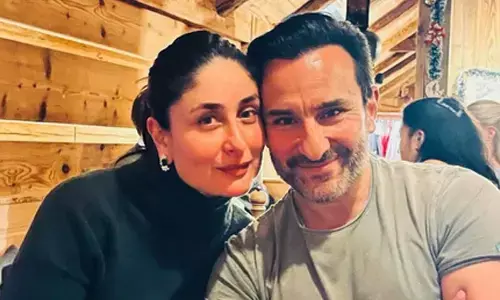‘Chandalika’ Unveils a Powerful Tale of Awakening and Social Transformation

In a mesmerising performance at Rangbhoomi, the Kuchipudi ballet ‘Chandalika’ unfolded a poignant narrative penned by Rabindranath Tagore. Seamlessly blending classical choreography with societal reflections, the production illuminated themes of awakening, discrimination, and social harmony
Rangbhoomi recently witnessed a superlative production of the Kuchipudi ballet ‘Chandalika’, written by the renowned Poet Laureate Rabindranath Tagore. The original choreography of the legend Vempati Chinna Satyam and Dr. Sobha Naidu was skillfully interpreted by Nihanthri Reddy and her students. It is a short psychological tragi-drama presenting us with the narrative of Prakriti in a retelling of the popular Buddhist legend of Ananda. It is reminiscent of Tagore’s unique and powerful portrayals of female characters and their central positioning. Caste, gender, and moral politics are all on center stage.
In progression, three main characters are depicted: Prakriti as Chandalika, the protagonist; her mother; and Ananda, the Buddhist monk. The performance provides plenty of nuances insightfully detailing the inner workings and conflicts of interest in what is ultimately a story of awakening and renunciation.
Nihanthri, as Chandalika in the title role, wore a very simplified elegant aharya of pink suitable for the vulnerability and gentleness in her. Painted drapes served as backdrops, being changed as required to frame the scenes suitably.
As she tries to buy flowers, profusely depicted by students as flower girls in beautifully contrasting yellow and red costumes, she is humiliated and ridiculed by them, her eagerness turning into tragic rejection. Milk and bangle sellers, another set of students dancing in rustic gear, are also encouraged to reject giving her the items required and disgustedly remind her of her antecedents.
Troubled by all this, Chandalika wonders what grave crime she has committed and why she has to endure these repeated humiliations. Nihanthri exquisitely portrayed in her abhinaya the zest turning into grief at these dejecting encounters very realistically. The spectators were moved to empathize with her plight. Mahathi very enchantingly played the role of the Buddhist monk Ananda. The coiffeured hair in a characteristic style and saffron robe set her off well. Chandalika’s mother was played very convincingly as being both dominating as well as protective by Trisha. She finds her daughter woe-begone, performing penance and being called to seek someone in need of water. She is not sure if this is the correct response in a situation where she finds societal inhibitions and self-made constraints. The monk Ananda persuades her into the revelation that she is an equal in status as a human being capable of giving him water.
She is exhorted to shed self-restraint and undergo a rebirth of self. Internalized inferiority is cast off. The joy of quenching the thirst of the monk leads her into desiring him, a deep delving into her psyche and longing.
The mother resorts to preparing magic spells, and as she chants, the stage is filled with the demons thus conjured up. Shaking their long manes, they put on fearsome expressions with the lighting effects highlighting sinister aspects of their weird appearance and chilling movements.
The monk is dragged away by them, shuffling in a chain-like movement. Only after looking at Ananda’s suffering is Chandalika released from the pride and egoism that had caused her to forget that love does not demand possession but instead grants freedom.
Thus, in a powerful social message, discrimination is questioned, identity and self-respect given worth, liberation and empowerment are desired. Equality and compassion close gaps in superior mind-set complexes, achieving harmony. Spirituality bridges social divides and promotes calm.
Societal mores, prejudices, and preconceptions are questioned by Tagore, and Ananda is central as a loving and enlightened monk who defies social norms, challenging religious cliches and promoting a more complex concept of enlightening spiritual consciousness. Breaking stereotypes is the main theme beautifully brought out by all the artistes in the play. Nihanthri deserves kudos for her creative performance and the well-synchronized nritta displayed by her students aptly playing their roles, which is a tribute to her meticulous training and practice rigor.















